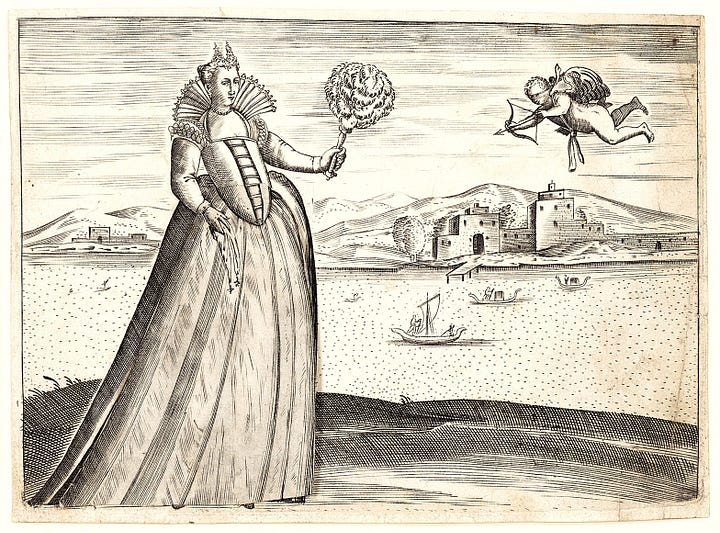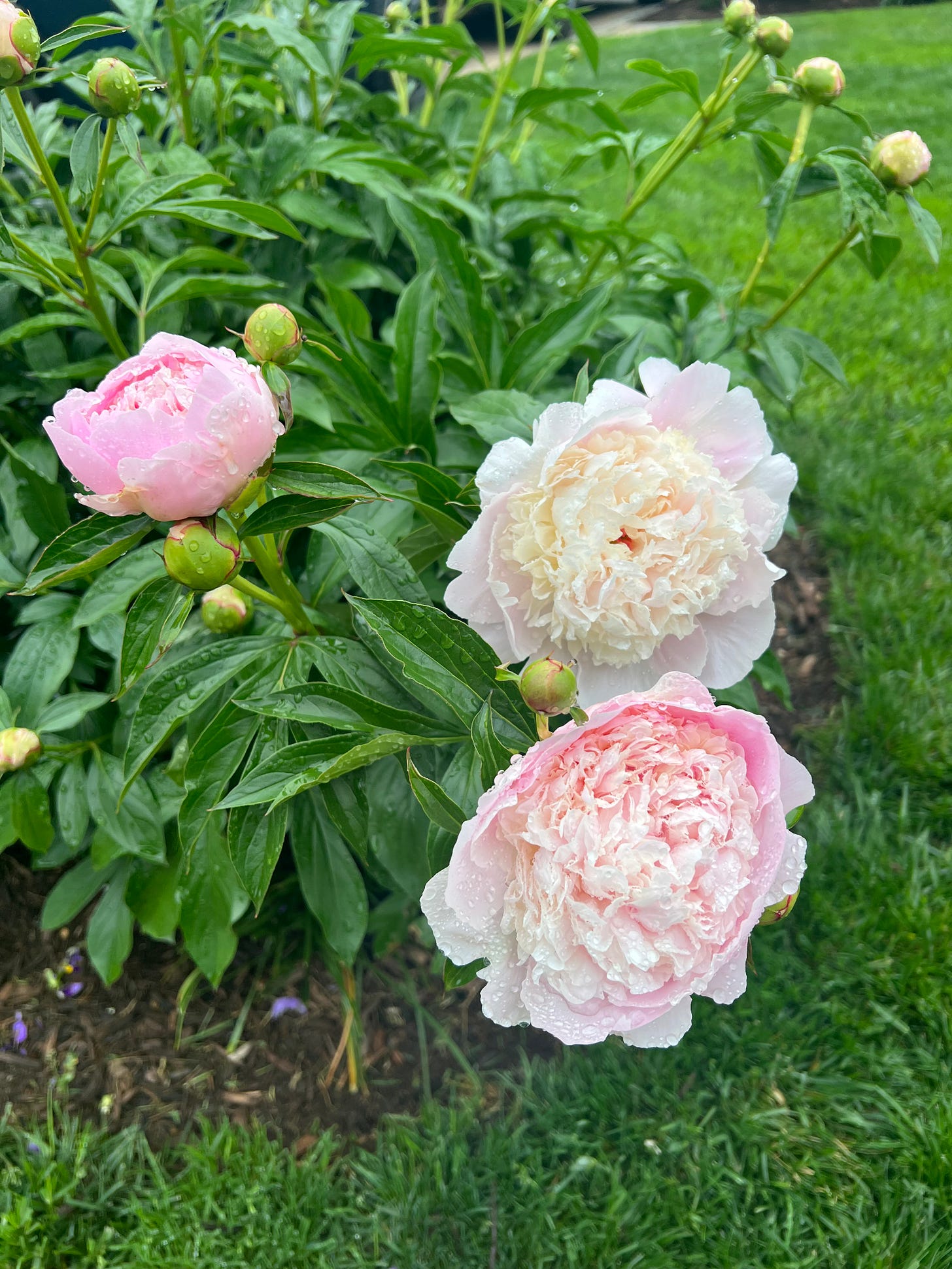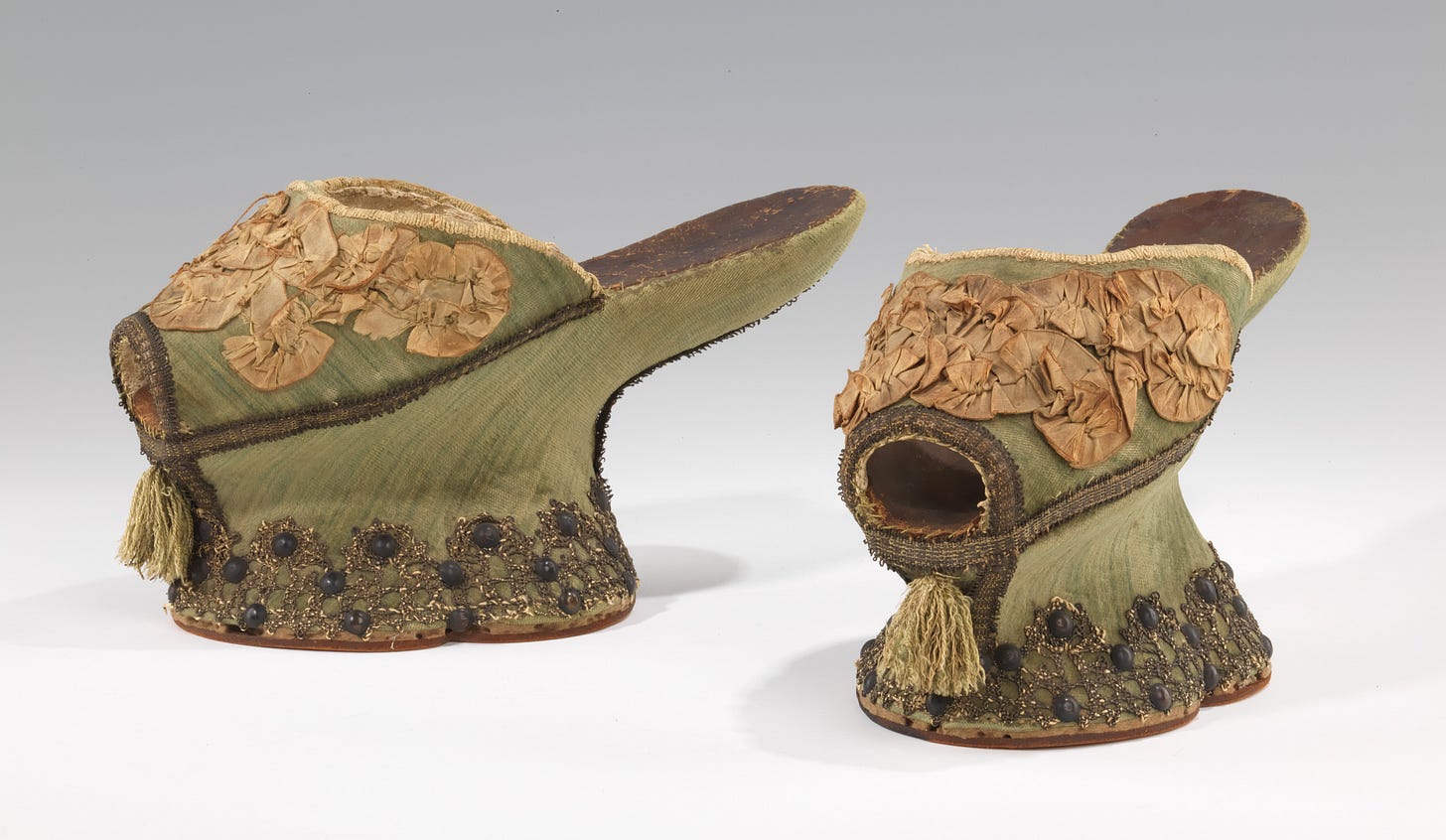May, already! Which means that in less than two weeks Young Queens will launch in the UK (May 11). These days have been busy and yet quiet. I’m recording podcasts and writing up interviews but am struck by the absence of work on the book itself. How strange it is to relinquish a project in which I so deeply immersed myself for years. My three queens and their entourages were my constant companions; now I’ve sent them on. I’m reminded of a sixteenth-century French poet I worked on years ago, Catherine des Roches, who wrote of her book as if were a child. Publishing is like sending your grown child out into the world, she said. You can only hope they will find their way.
In the meantime, I’ve been taking lots of walks to stave off the pre-launch jitters. Spring has technically arrived in DC, although you wouldn’t know it. It’s been a wonky season – a few weeks ago it was sweltering and now everyone is bundled up in coats and wielding umbrellas. Still, the pollen has blanketed everything, and the flowers are in bloom. The peonies, my favorite, are almost at their peak.
And, just as I’m writing this, look what’s arrived!
Upcoming Interviews and Events
It’s been a real pleasure to speak with Dan Snow at History Hit, Lauren Good at BBC HistoryExtra, and Amanda Churchill and Charlotte White, hosts of History Hack, about Young Queens. I’ll shortly be speaking with Suzannah Lipscomb, host of Not Just the Tudors, and Artemis Irvine, host of Travels Through Time. If you like history and podcasts, please tune in! I’m intrigued by the premise of Travels Through Time: each guest picks a year in the past that they’d love to travel back to and describes three “scenes” from their chosen year. My year is 1559. The place in Paris near the Place des Vosges, the site of King Henry II’s death. Have a listen to find out why I think that year is so important.
If you’re in the UK in July, I’ll be at the Chalke Valley History Festival. I’m thrilled and honored to be sharing a stage with the novelist Kate Mosse who has recently published the non-fiction Warrior Queens and Quiet Revolutionaries, a brilliant compendium of all the historical women you’ve likely never heard of. I loved Warrior Queens, and Kate Mosse and I will be discussing the what of women’s history as well as the why and the how. I’m looking forward to our conversation. If you attend, please say hello!
For those in the US, stay tuned for future events and interviews. For now, if you happen be in the DC area on August 15 (US launch day!), please join me at Politics and Prose at 7pm, where I’ll be speaking about Young Queens. Which reminds me: In honor of Independent Bookstore Day, which has just passed, please support yours! Where would we be in the DC area without Politics and Prose? Every day should be Independent Bookstore Day.
A Forgotten Queen
Of the three queens that feature in Young Queens, do I have a favorite? An interviewer recently asked me this question, and it’s a tough one to answer. I enjoyed researching and writing about all these women. They were very different from each other – different personalities and childhoods, different ways of handling conflict, different kingdoms, customs, and religions. One of the arguments of Young Queens is that despite all these differences, Catherine de’ Medici, Elisabeth de Valois, and Mary, Queen of Scots, faced remarkably similar challenges that had everything to do with their youth and gender. Together, they tell a larger story about queenship – and about how women get used and abused in the pursuit of power.
But let’s leave the larger argument aside for the moment. I also got to know these queens as people, and that was one of the best parts of the project. I loved learning about their quirks, the mix of talents and flaws that made them real and human. I’ll always have a soft spot for Catherine de’ Medici because I’ve worked on her for years, and I loved rediscovering Mary, Queen of Scots. But today I’ll close with a few words about Elisabeth de Valois. She was the youngest of the three, and the inspiration for Young Queens. She’s also the queen who has mostly been forgotten.

Why is that? In part it’s because she died young, in part because she never bore the heir to the Spanish throne. Though she had daughters, she never had a son. In the Escorial, there is a special chamber where the kings of Spain are buried alongside their consorts, the Pantheon of Kings in the Royal Crypt. But not every consort is there – only the women who gave birth to future kings of Spain. Instead, Elisabeth was buried in the Pantheon of Princes which, for tourists to the Escorial, is harder to find. The history books barely touch on her.
So here is a little bit more about Elisabeth de Valois, known in Spain as Isabel de la paz – Elisabeth of Peace. Born in France in 1546, she was the beloved daughter of King Henry II of France and Catherine de’ Medici. She was married at 13 to Philip II of Spain, as part of a peace treaty to end generations of war between the French and Spanish. She suffered from a chronic illness, had trouble with her period, may have grappled with an eating disorder. She loved her mother, Catherine, and felt duty-bound to her, even sometimes serving as a spy for her. Like her mother, Elisabeth was barren for almost a decade before she bore a child. And just when she began to succeed as a queen, she died, only twenty-two years old.
As a young mother, she adored her two daughters. She couldn’t stand to be apart from them, so she kept them with her in the palace. But as Elisabeth would discover, children and diplomacy (or espionage) don’t always mix. Once, Elisabeth left a letter containing particularly sensitive information on her desk. As Elisabeth later explained to the French ambassador, her toddler daughter, Isabella (a mischievous little imp), wandered into the room, tore the letter into pieces, then threw the pieces out the window. Luckily, Elisabeth collected all the bits before anyone discovered them. Such were the perils of being a working royal mom in the Renaissance. I love that story.
A final tidbit: like her mother, Elisabeth was a clothes horse. She had to be – as Catherine had taught her, clothes could make the queen. Elisabeth especially loved her ‘chopines’ (known in Spain as ‘chapins’). These were tall, cork-soled shoes that were all the rage in sixteenth-century Europe, especially in Italy and Spain. The height could be commissioned – taller or shorter – depending on the wearer’s preference. In Venice, they could get so high that women often required attendants to walk alongside them so they could balance.


Elisabeth adored her chapins. Once, when Catherine de’ Medici tried to send her daughter a pair of French silk slippers, Elisabeth politely refused them. You know Elisabeth, the French ambassador explained to Catherine, “when it comes to chapins, she is entirely a Spanish woman!”
Don’t you want a pair?







Thanks for introducing us to the young queens and especially Elisabeth de Valois. What a great way to feature women leaders and the history of their rise to throne. The platform shoes certainly looked better than those tiny and tight shoes the Ching Dynasty's noblewomen and others had to wear to show off their tiny feet!
Loved this essay - and just last week I saw some chopines in Austria - at Schloss Ambras! I'm not sure I've ever noticed or thought about chopines before, but the bit about them being a particularly Spanish fashion was on one of those labels, too. Looking forward to listening to all your book podcast interviews Leah!